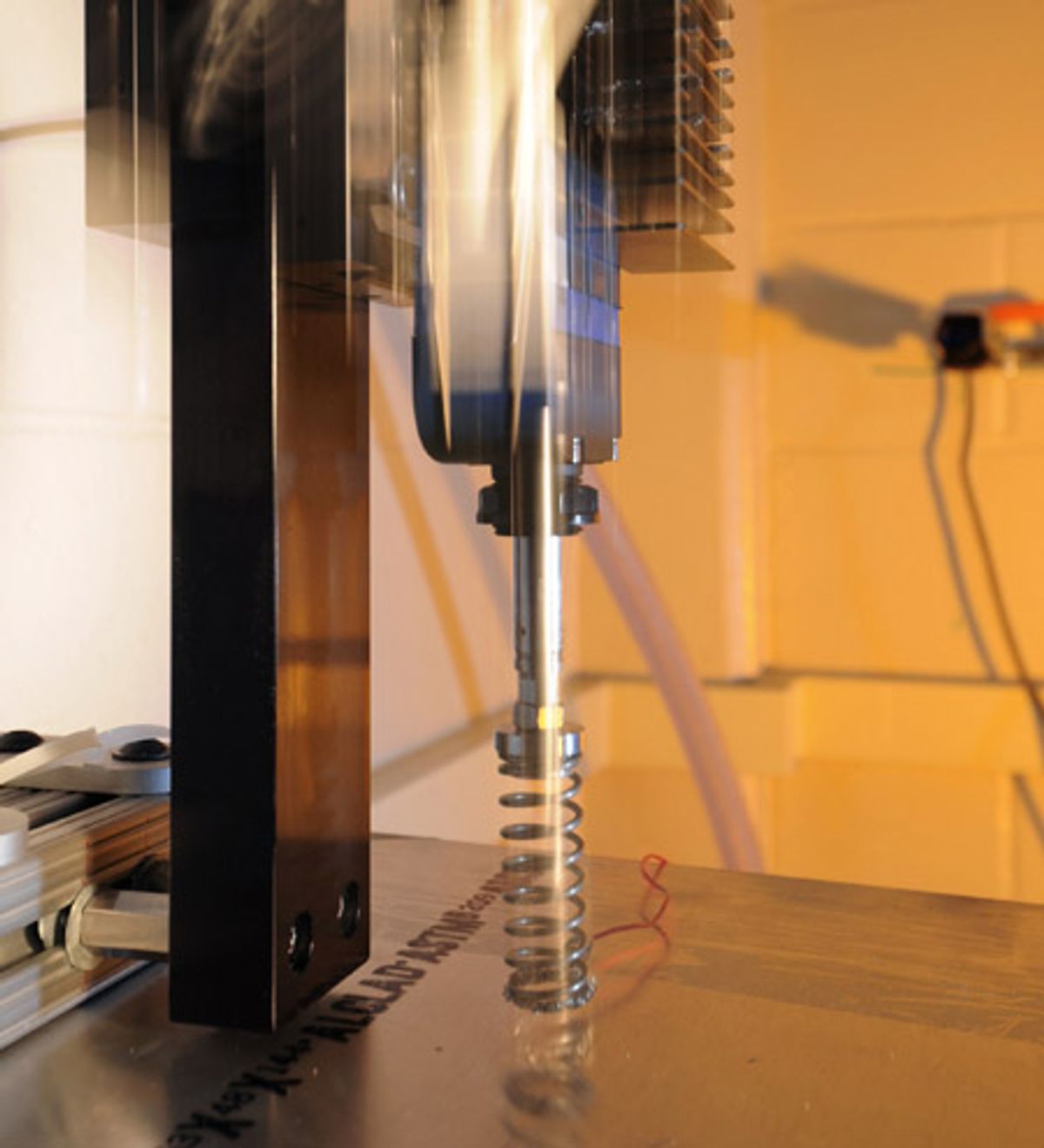We love jumping robots, and not just because they're so much fun to watch. Jumping is also a great way to get around: it's far more efficient than flying, and much more versatile than driving or walking or crawling. Jumping robots do still need a big burst of power to get off the ground, but after 20,000 jumps worth of analysis, researchers at Georgia Tech have found a secret that makes robotic hops ten times more efficient.
Okay, here's the secret. Get ready, 'cause it's quick and you don't want to miss it:
Catch that? There's a stutter (a little jump) right before the first big jump. That's all, that's the secret. It's simple, but it makes a huge difference. Daniel Goldman, one of the authors on a paper published in Physical Review Letters, explains:
“If we time things right, the robot can jump with a tenth of the power required to jump to the same height under other conditions. In the stutter jumps, we can move the mass at a lower frequency to get off the ground. We achieve the same takeoff velocity as a conventional jump, but it is developed over a longer period of time with much less power.”
How much less power? Up to 10 times less. The jump takes longer to make because of the initial hop that's required, but that seems like a small price to pay to keep your robot bouncing ten times longer on the same amount of power.
This trick works with "pogo stick" jumping robots, which are robots that use springs to store energy. Georgia Tech built themselves the most simple jumping robot possible to run their experiments, consisting of a leg, a spring, and an actuating mass. They expected to find that the optimal jumping strategy would be related to the resonant frequency of the system, but after ten thousand tests or so, it turned out that frequencies above and below the resonance led to optimal jumping, and that's where the stutter jump comes from.
The link below has a nifty little interactive website that lets you virtually mess around with the jumping robot used in these experiments. Next up, the researchers are going to keep on experimenting with this robot, except on a variety of surfaces including sand and disaster-type environments.
[ CRAB Lab ] via [ Georgia Tech ]
Evan Ackerman is a senior editor at IEEE Spectrum. Since 2007, he has written over 6,000 articles on robotics and technology. He has a degree in Martian geology and is excellent at playing bagpipes.




